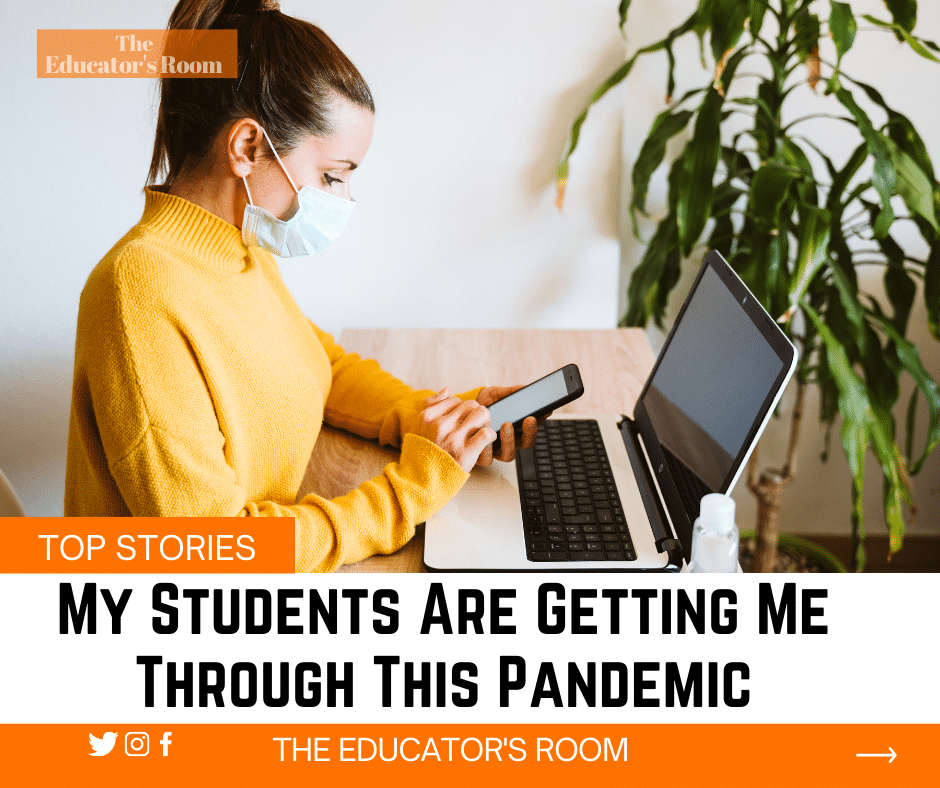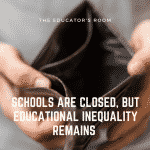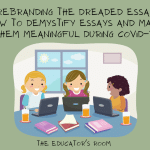I walk up the stairs trying to find the new weight room, the location of our school’s “rapid” Covid-19 testing area. My nose swabbed by a woman donned in full personal protection equipment makes me think of a scene from a dystopian movie. As I exit, I see one of my students arrive with what looks like his father. Another student will inform me later that he came to school to get tested as well. It’s not their cohort day, but they want more in-person time.
High school students want to come to school—the irony!
New York State Governor Andrew Cuomo recently designated the area where our district is located yellow, which means the school district must test twenty percent of its staff and students. For a big community like ours, that is 1200 people! Voluntarily.
And yet, adolescents are doing their part. An age group much-maligned is stepping up. They want school and all of the activities. My daughter, a sophomore, has pledged to “do every school function” after covid ends. They recognize what they must sacrifice. They wear their masks, sanitize, and keep their distance, hoping that their efforts will shorten the sacrifice. They protect their grandparents by not seeing them. No one can tell me that teenagers don’t care for others.
My students and I joked that moving to yellow was like in elementary school when the teacher moved your “clip” to a warning color. One student said: “Ah, my clip was always moving.” Chuckling, because I can see that spark about him, assuming that under his mask is a mischievous grin.
We hope that the governor does not need to move us to orange or the dreaded red; both may require more testing and possibly remote only learning.
Making a little fun of the governor and sharing pandemic humor is our connection. Any connection with my high school students is like a warm hug. I am so encouraged when my students greet me over the Google Meet chat function or answer my poll about which thanksgiving food they enjoy the most. Mashed potatoes are the winner, by the way.
Odds had our school remote-only by October; then it was Halloween, now it is Thanksgiving. The kids are taking bets if we continue this crazy hybrid experiment after the Thanksgiving holiday.
Hybrid teaching while live streaming is taxing. Although debilitated by the amount of energy required to implement even a mediocre lesson, I fear we will lose our connection to our sanity if forced to teach at home, or even worse, to teach in empty classrooms. As social creatures, we require a human connection that is not holographic, not virtual. But, we also need to survive this pandemic.
After the school’s first positive cases, my average in-person class size reduced from ten to about five attendees. I understand the reasons for students moving to the remote only option. Some want to limit the risk; others want to catch more sleep. With all of the schedule changes, my school begins earlier this year, disregarding every possible adolescent sleep study.
[bctt tweet=”Despite the early arrival, the loss of block scheduling, the technology snafus, and the mask mandates, an overwhelming number of my students are committed to learning. ” username=””]
With every assignment and assessment that I grade, I marvel at my students’ perseverance and resiliency. After ten weeks, we have established a routine, of sorts. It’s a pattern based on uncertainty, interruptions, and a deadly virus, but we are managing. And the majority of my students are thriving. We are literally in this together.
The students who “attend” school every day, wearing a mask in their hybrid cohort, or at home in their pajamas, are my favorites. We count on each other to make it through another day. We have a social contract–I provide the lesson, they complete the work–an agreement to maintain a sense of normalcy in this anxious time.
Recently, a senior gave me an early Christmas gift in case we go remote before the holiday. Her attached note, filled with gratitude, kind words, and thoughtfulness were like a salve on a wound. We both know the situation could be better. She knows what my teaching was like in her sophomore year, but she is still so willing to show her appreciation. Little does she know that she is my chicken soup during this time of illness.
Another senior, this one a male student, confided that our fifth-period class is why he attends school. I told him: “No, you are the reason I am getting through this pandemic!” His enthusiasm for history and willingness to partake in my crazy antics buoy my spirits.
Facts.
Five times a day, I say hello to avatars on a screen, saying “Hello, Mary Grace,” like an episode of the Romper Room. I am rewarded by a few kids who will respond to me in the chat and others who will turn their cameras on and wave. These brief moments of humanity feel good and cement the reality of teaching through a mask’s veil.
With every email or Google Classroom comment, my students and I have an interchange. In every lesson where technology fails, my students view my humanity. With each historical topic, we explore the past and understand more about now.
School is not neat and tidy. My lesson planning is messy and frustrating. I cringe when a document loads slowly or a student disappears on a Google Meet.
This school year is hard, really hard.
And, so is life.
My students, however, are learning more than content. They now appreciate sacrifice and altruism. Their persistence and their spirit gets me out of bed in the morning and will get me through this pandemic.






